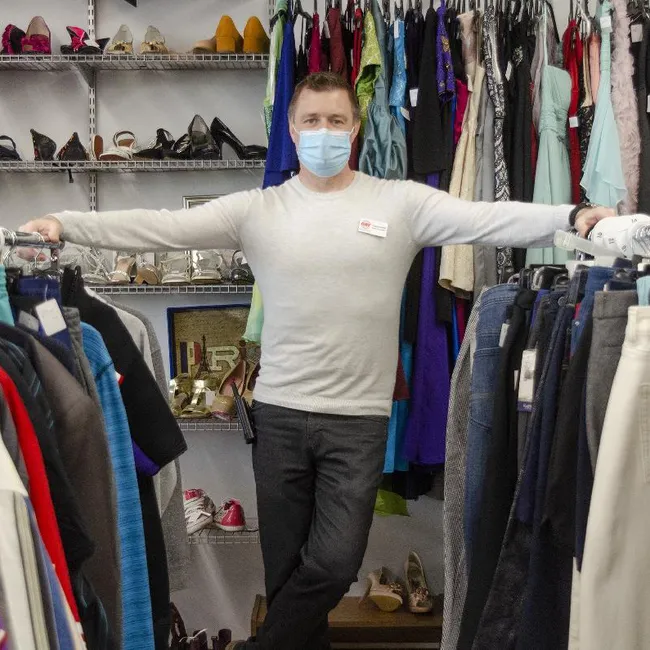On a recent Saturday, a lineup of shoppers 10 deep were looking for a deal on the brand names: American Eagle, Lululemon, Kate Spade.
They weren’t at some big box store or a mall. And they weren’t paying out the ear for these designer goods. What they were doing was getting quality items for a decent price, all while helping GBF Community Services.
“It’s the donation that gives twice. You’re giving an opportunity for someone to purchase something that maybe they can’t purchase any other way but by thrifting. But then all those proceeds are benefiting individuals and families immensely,” said Stacy Elia, CEO of GBF.
The thrift store at GBF has long been an important part of the agency’s revenue. It’s a relatively predictable and stable source as well, Elia pointed out, huge in the non-profit world.
It’s also becoming more popular, as people look for ways to save money and reduce the environmental burdens that come with mass-produced new clothing.
“Thrifting is becoming a big thing right now,” Elia said.
Duane Arnold is director of operations for GBF, and he’s noticing the same thing. It’s part of the reason why GBF has updated its thrift store. It’s also why they’re putting a focus on the store as a destination in Grimsby.
“Thrifting is booming, so we are starting to see that person who thought, ‘Oh no, I can’t thrift’ because, you know, there’s a stigma,” he said. “They’re coming now and they’re bringing others. We just have so much quality items that come in. You’d be silly not to.”
GBF recently installed a boutique area at the store, where some of the higher-end items are sold. While they’re pricier than what you’ll find elsewhere at the store, Arnold said they’re still very affordable.
Arnold and Elia said the thrift store fits with its social enterprise work, in which environmental sustainability is a key aspect.
In addition to the thrift store, GBF also runs a recycling program where they accept donations of anything from bed linens to refrigerators, which they are then able to get recycled and make some more money.
Last year, Arnold said they diverted more than 270,000 kilograms of clothing, nearly 45,000 kg of scrap metal and nearly 35,000 kg of cardboard.
“We’re doing everything we can to recycle, reuse or reduce. And we want to be your one-stop drop for recyclables, donations,” Arnold said.
Arnold said they’re also looking at incorporating upcycling into the store. The process has gained traction and sees people turn a worn-down item like a dresser into something new and completely different, like a planter.
At the Niagara Region, waste management staff have been doing their part to help the non-profit thrifting sector with a diversion program at its Humberstone and Niagara 12 landfills. The Niagara 12 partnership was with GBF up until this spring when the Salvation Army took over. The region’s director of waste management services, Catherine Habermebl, said the program has been successful.
“We recognize that a lot of material coming into the sites, looked like they were in good shape. They could be reused,” she said. “And so rather than having the material take up valuable landfill space, we saw an opportunity to give them a new life.”
On average, she said they divert about 25 tonnes from Humberstone and 24 tonnes from Niagara 12 every year.
Though that’s only a small part of the Region’s overall waste diversion efforts, it’s important for its multiple functions of being reused and helping non-profits generate revenue.
GBF is hosting a sale at the end of the month. From April 28 to 30, shoppers can pick up many items for $2. For information, visit gbfgrimsby.com.


